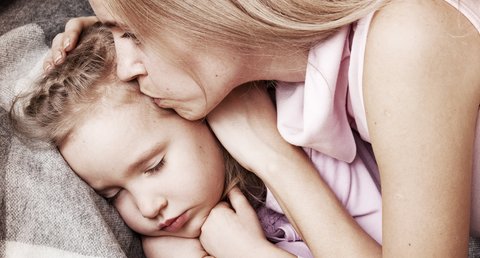By the time babies reach their first birthday, they have rudimentary “internal working models” of their attachment relationships, based on their experience of caregiving.
The internal working model includes perceptions about self and expectations of the attachment figure(s). These mindsets, perceptions and expectations are encoded in the child’s implicit memory in the Limbic region of the brain, and are often preverbal and unconscious.
“Securely attached” toddlers develop a positive internal working model (caregivers are trustworthy and reliable; I am worthwhile and lovable; my world is a safe and joyous place). These children typically become emotionally, socially and cognitively competent.
“Avoidantly attached” children learn to cope with rejection and punishment, but not how to elicit protection, nurturance, and love. They are hypervigilant and block awareness of their anxiety and emotional needs. Researchers have found that the heart rates and stress hormone levels of avoidantly attached 1-year-olds significantly increased upon separation and reunion with their mothers, but their outward appearance remained calm. These babies are already “deactivating” their attachment needs and behavior, defending against vulnerability, and displaying rejecting behaviors toward their caregivers (“I will reject you before you reject me”).
“Anxiously attached” toddlers cannot make sense of their inconsistent experiences with caregivers. They cannot predict whether their attachment figures will be nurturing and protective, or hostile and rejecting. These young children “hyperactivate” attachment behavior, are angry and anxious much of the time, and exhibit extreme dependency (extremely clingy and demanding).
Children with “disorganized attachment,” a result of severe and chronic maltreatment and abandonment, have no consistent strategy to handle separation, reunion or emotional needs. They develop PTSD in response to their disturbed, frightening and abusive attachment figures, as well as other traumas.
The “internal working model” of young children who experience abuse, neglect and disrupted attachment commonly results in a denial of their need for closeness. A “false self” begins to develop; the child denies his or her true feelings and needs. Children with anxious attachment show inconsistent and unpredictable behaviors similar to their caregivers. They alternate between anger and neediness, show limited exploratory competence and self-reliance, and become selfish and overdependent preschoolers. They often develop a coercive pattern of behavior to control the attachment figures. Children and caregivers typically become enmeshed in an angry and emotionally distant relationship.
The development of a new belief system (internal working model) is a primary goal of child and family therapy. Changing the internal working model happens through “cognitive rescripting,” which involves positive, safe and secure emotional experiences between children and caregivers. Over time, children learn to trust caregivers, value themselves, and view their life in a hopeful way.



Terry, this is a terrific summary. I recognize my son in the “Avoidantly Attached” group and my daughter (now with full blown RAD at 17) in the “Anxiously Attached” group. I am saving this page to email to friends and family to help them understand.
Glad this was helpful.
with the growth in knowledge of “fixed” and Growth mindset. i was wondering if there is any work re: attachment and the two above. ie are people with a growth mindset mostly secure and visa versa??
For me, it seems somewhat logical that this could be the case, but then there are always mismatchers.
Paul